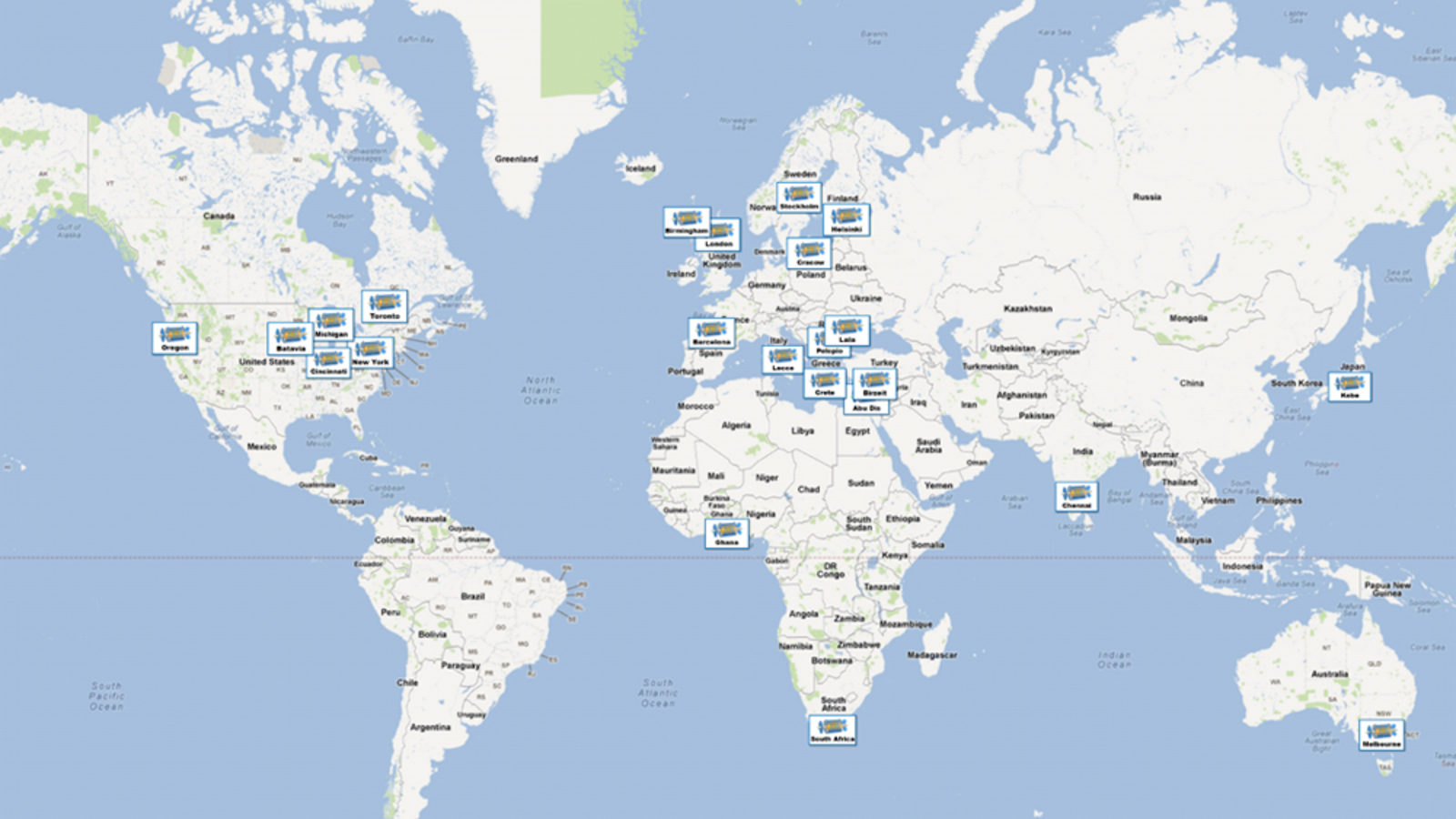ATLAS Virtual Visits, a program run by one of the major experiments at CERN, took top prize for “Best Online Event” in the Digital Communication Awards, hosted by Quadriga University of Applied Sciences in Berlin, on Friday, Sept. 14.
Beating out communication efforts by Procter & Gamble and London's Royal Opera House, the Virtual Visits program, covered in the August issue of symmetry, makes it possible for students and members of the public across the globe (from locations highlighted in the illustration above) to visit ATLAS by telecommunications. A volunteer physicist hosts each session using the visiting group’s main language, starting with an introduction to CERN and to the ATLAS experiment. A two-way video connection allows the students to ask questions and receive answers immediately, all while peering into the control room.
In the past year, groups from Japan, Poland, England, Greece, Palestine, Ghana, South Africa and the United States tuned in to learn from the experts themselves. As the program gains traction, more and more people are requesting visits.
"Credit for the award belongs to all the ATLAS outreachers who organized visits for master classes, local schools, institutes and events, as well as those who acted as hosts in the control room," wrote ATLAS Outreach & Education Coordinator Steven Goldfarb, in an email announcing the award. "The number of requests for visits is steadily increasing, supporting our key goal of bringing the excitement of LHC research to students and the general public."
As the demand rises, Goldfarb and his team are brainstorming ways to upgrade and expand the program. They’re investigating other means to connect, such as Google+ hangouts, and they’d like to bring visitors everywhere. Currently, the visitors are limited to the ATLAS control room. With tools like the iPad, the hosts hope to be able to bring visitors to see the ATLAS detector and the rest of CERN.
“Right now, there are about 80,000 visitors who see CERN every year,” Goldfarb says. “With Virtual Visits, we’d like to see that number rise to 7 billion.”







